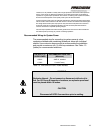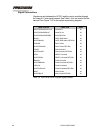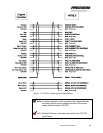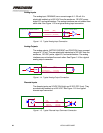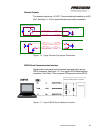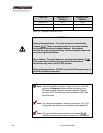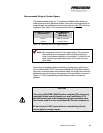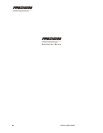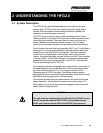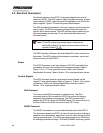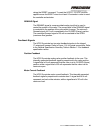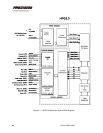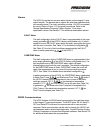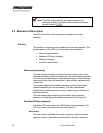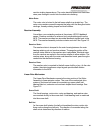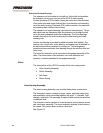
2 UNDERSTANDING THE HFG2.0
2.1 System Description
The HFG2.0 is an electrically operated gas fuel-metering valve that
requires only 120 VDC power, an analog fuel demand signal, and a
discrete RUN command to achieve basic operational capability. No
pneumatic or hydraulic power is required.
The HFG2.0 is a closed loop servo system containing Motor Control
Electronics (MCE), a brushless DC-motor-driven ball screw actuator and
valve flow body assembly. The valve closes its own control loop on a
position feedback signal from an internal resolver. Thus, the valve
continuously modulates its position and provides precise fuel metering.
Gas fuel enters the valve flow body assembly INLET port. The fuel flow is
evenly split via a contamination deflector and pressure-balanced orifice
assembly as it enters the INLET port chamber. The orifice assembly
contains a set of poppets and control orifices. As the valve actuator
retracts, the poppet assembly exposes fuel from the INLET port chamber
to the two orifices. The fuel flows through in the annulus between each
poppet and fixed orifice and recombines in the OUTLET port chamber.
The fuel exits through the OUTLET port.
Flow is metered between the poppets and control orifices in proportion to
the poppet position and resultant flow area. The flow area ranges from
zero with a Demand signal at 0 % of its range to maximum with a
Demand signal at 100% of its range. The orifices contain pressure-
energized soft seats and metal-to-metal hard seats, which provide a leak-
tight seal when the poppets are in a closed position.
A pre-loaded, fail-safe spring is located between the valve housing and
poppet assembly. The spring load increases as the valve opens. If a
power failure occurs, the spring causes the poppets to return to the soft
seats, thereby closing the valve.
WARNING
The soft seats are unidirectional and will leak if the OUTLET is more
than 50 psi greater than the INLET. PECC recommends that the
INLET port pressure always be ≥ to the OUTLET port pressure.
CH. 2: UNDERSTANDING THE HFG2.0 25



